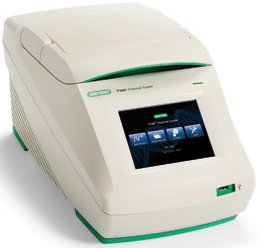practical considerations - MetabolicEngineeringGroupCBMA/MetabolicEngineeringGroupCBMA.github.io GitHub Wiki

We start work at 09:00 sharp, This makes the lab work more efficient as it is easier to communicate when everyone is at the same place at the same time. It is also easier to get started in the morning as the lab fills up quickly. If you can not make it to 09:00, let us know in the WhatsApp chat.


This is important for your future academic career. Get it here. This wikipedia entry explains what an ORCID is.

You will need a google account if you do not have one already. You also need this to access the primer and freezer lists and for booking the PCR machine.
 We keep public genetic constructs in the Metabolic Engineering Group at CBMA Github organization. We keep private (not yet published) constructs in this private Github repository.
We keep public genetic constructs in the Metabolic Engineering Group at CBMA Github organization. We keep private (not yet published) constructs in this private Github repository.
Please follow the guidelines regarding How to mark your material and maintaining lab notes.
Pipetting with both accuracy and precision is maybe the most important skill for any molecular or microbial biologist. Follow the instructions and be sure to follow the recommendations on use and care of the pipettes. Calibrate you P20 and P200 pipette using the instructions in order to verify both the pipette and you ability to use it.
 We keep a list of PCR primers here.
When ordering new primers, add them to the top of this list and give them a number.
We keep a list of PCR primers here.
When ordering new primers, add them to the top of this list and give them a number.

You also need access to the Biorad T100 google calendar. We use this for booking the PCR machine in the lab. Book by adding your name and the time you want to use the machine:


The autoclave is run three times per day (see autoclaving). There is no autoclave that we can run independently at this moment. Plan well for this since your work will be delayed otherwise.

You will likely make new microbial strains or genetic constructs during your stay in the lab. You need to save these in the -80°C freezer after they have been confirmed to be correct. We keep a list of frozen strains in this google spreadsheet: -80. Please follow these instructions to freeze your strains: Yeast and bacterial freezer stocks.

We work mostly with baker's yeast Saccharomyces cerevisiae. An enormous amount is known about this organism. Getting Started With Yeast is a gentle introduction written by Fred Sherman at the University of Rochester. Sherman F. Getting started with yeast. Methods Enzymol 2002;350:3–41. A pdf is available. Please read it to get more familiar with this fascinating organism. There are also usually copies available online
In particular, we follow the genetic nomenclature for Saccharomyces cerevisiae defined in this document.
Record your frozen strains here: MEC_freezer_list
Location and names of all boxes in -80 freezer DEEPFREEZER 8. This freezer is located next to the aquarium.
Define your initials in order to deposit in the -80°C freezer here: Depositors
List of restriction and other enzymes Enzymes_LGM
Please record here when you make new competent cells. This is so that we can trace competency.
Please record here when you make new Taq polymerase.
Please record here when you make new PennStateLadder.
Do you need a short name for your plasmid to write on the Eppendorf tube? Record it here and get a π number. You can for example call your plasmid π43 which is short and easy to search for on your computer MECPlasmidNames
These primers were used by the Yeast Genome Deletion project. There are errors in this table, make sure to check primers before ordering Yeast Genome Deletion Primers and PCR product Sizes.
- Joined WhatsApp "LGM Laboratory" group
- ORCID
- Gmail account
- Joined the LGM Google spreadsheet (invite needed)
- Joined the Google doc Primer list
- Joined the BIORAD T100 Google calendar
- Github account